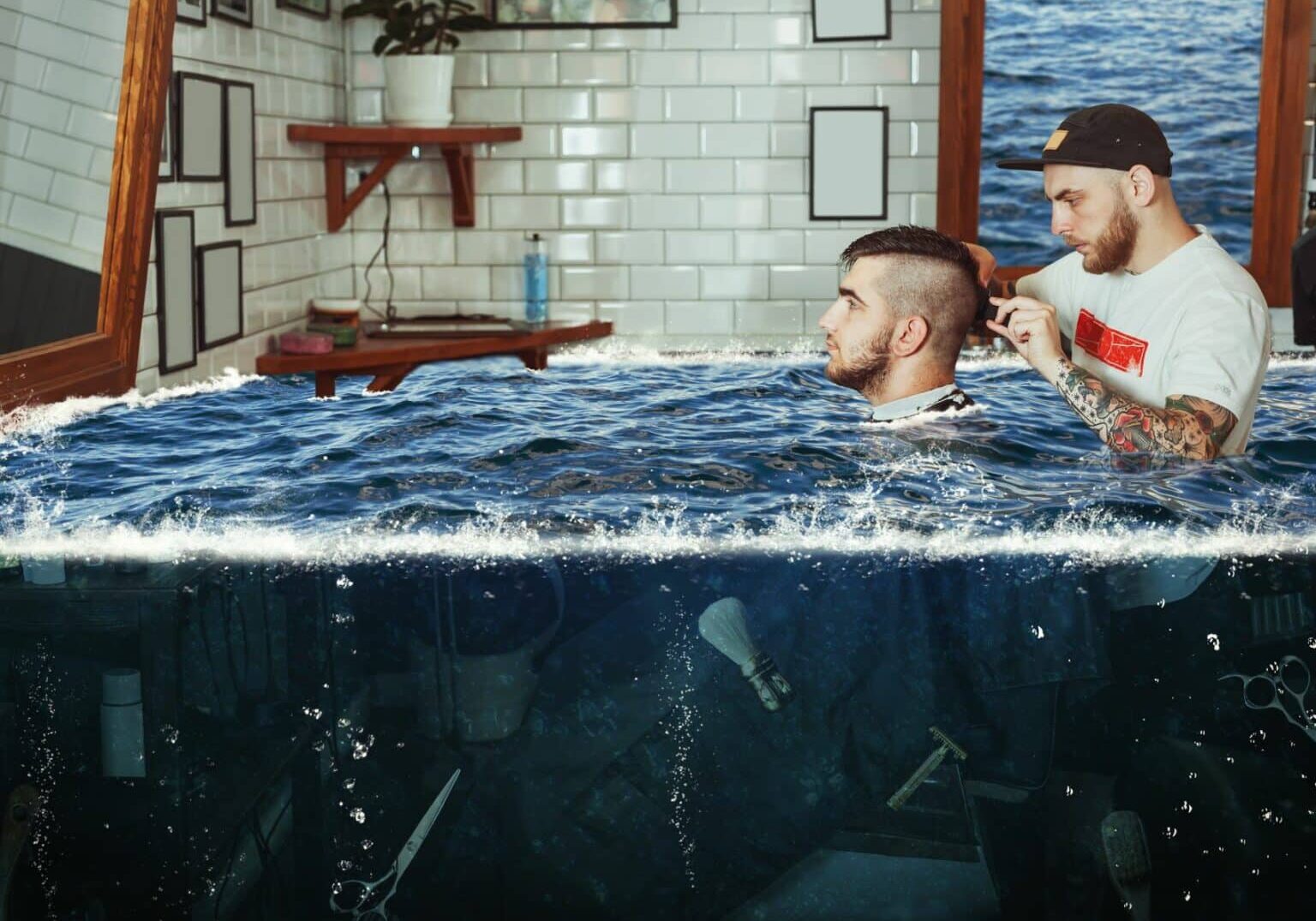Water Damage Prevention: How to Save Your Business From Common Beauty Salon Hazards
Last Updated: August 12, 2024

Beauty salon hazards like overflowing sink water damage or a flooded hair salon can happen in an instant.
Imagine, after shampooing a client’s hair in the wash basin, a hairstylist didn’t turn off the tap completely. As she finished the client’s cut and style, water continued to fill the basin until it overflowed. Since the basin wasn’t by her station, the stylist didn’t notice the overflow. She swept and tidied her station, cleaned her tools, and left. The water continued to run all night.
When the salon owner arrived the next morning, water had drenched the floor, saturated the baseboards, and even damaged some furniture. What’s worse, the salon was on the second floor, and the water had penetrated through, damaging important paperwork, technology, and furniture in the floor below. The owner had to clean up the signs of water damage and any damage to the downstairs tenant’s property, too. The costs to repair water damaged wood floors and water damage on the walls after the flooded hair salon incident set back the owner financially for years to come. She even risked her hair salon closing.
Failed Water Damage Prevention: The Silent Salon Killer
Water damage is about as sexy as split ends, but far more dangerous. Sure, pedicure infections, eyes swollen shut, and hair bleached to oblivion may seem like bigger nail biters. But failed water damage prevention is one of the most common claims against beauty professionals.
Why’s water damage such a common beauty salon hazard? To wash or tone hair, soak hands and feet, and even clean your tools, you’ve got to use water. But it’s easy to move fast and not shut it off.
One water leak, stream, or slow drip that won’t quit can cause a lot of damage quickly—especially if the leak goes unnoticed for an extended period of time. For example, you might notice mold growth signs of water damage in the walls or on the walls following a flooded hair salon incident, like the one from our intro. Alternatively, a minor leak not cleaned up on time could cause a customer to slip and fall in your salon.
For the ultimate water damage prevention, follow these three tips.
1. Stay put.
While it’s tempting to turn on your hair salon sink and walk away to multitask, don’t.
Your salon water system could have a clog or a leak. Or you might be gone longer than you’d planned. And if you’re not there to babysit that tub, you can’t notice when it’s about to overflow. So stay put.
2. Plan ahead for beauty salon hazards.
Ever hear the saying that if you plan for something, it won’t happen—but if you don’t plan, it will?
If you’re looking for potential causes of water damage, you’ll be more likely to stop it before it starts. Instead of researching tips on what to do after water damage, prioritize water damage prevention. Some questions to ask yourself that could prevent accidents:
- Is the base of the wash basin loose?
- Does the pedicure tub have signs of a clog?
- Does it look like the sink has leaked in the past?
- Do you observe any signs of water damage, like mold growth signs of water damage on the walls?
3. Check before you go.
Before you leave, always check that the water is off everywhere. Even if you only did manicures today! Even if you didn’t wash any hair! And even if you’re sure you turned everything off!
No matter what, double-check all the water’s off before you leave. The salon owner and other building tenants will thank you for being proactive about beauty salon hazards like running water.
Keep your head above water with WellnessPro.
As a beauty professional, you’re likely to end up in hot water at some point in your career.
From difficult clients getting bent out of shape because their hair doesn’t look like the picture on Instagram to clients that get hurt at the salon, we’re here to help. Our insurance for beauty professionals helps with defense and payouts so claims can run off you like water off a duck’s back. Click the link to learn more about our insurance.
